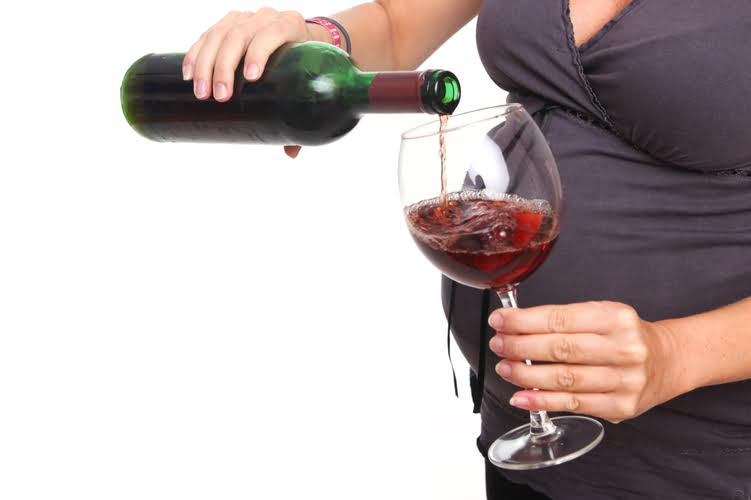Rappers may feel compelled to project an image of success, wealth, and a “party lifestyle” to appeal to their audience and maintain their popularity. Please note that the table above provides examples of different rappers and the specific drugs they have struggled with. The prevalence and types of drug addiction among rappers can vary widely.
Macklemore, also known as Ben Haggerty, struggled with substance abuse, particularly addiction to prescription drugs. He has been vocal about his experiences with addiction and has used his platform to raise awareness and advocate for recovery. Macklemore’s journey to sobriety has been marked by personal growth and resilience, and he continues to be a source of inspiration for others facing similar challenges. Eminem, also known as Marshall Mathers, is a highly regarded rapper who openly shares his struggles with drug addiction. He battled with substance abuse, particularly addiction to prescription medications.
Snoop Dogg – “Gin and Juice”
- The dealers sold Miller prescription painkillers that were laced with the powerful opiate fentanyl.
- Rappers often find themselves in environments where drugs are prevalent and easily accessible.
- The active ingredient in the substance is THC, a psychoactive chemical that produces pleasurable effects.
- Hip-hop’s discussion of substances often serves as a lens to explore broader societal issues.
- However, with most things taboo in society, cocaine was also looked at as an ill to society, with many pointing to it as an agent of self-destruction within Black and Latino communities.
In 2016, he was found unconscious from an overdose and sadly, in 2021, DMX passed due to a cocaine-induced heart attack. William Jonathan amphetamine addiction treatment Drayton, Jr., well known as Flavor Flav, has publicly shared about his intense struggle with drug addiction. At the height of his addiction, he was spending between $2,400 to $2,600 a day on cocaine and crack for six years straight, costing him nearly $5 million on drugs over that period of time. While it is possible for rappers to continue making music while struggling with drug addiction, it often comes at a cost.
Lil Wayne (Dwayne Michael Carter Jr.):
According to investigators, he was identified as one of three shooters, the other two being Sean Gathright and Rashad Murphy. Two more suspects — Alicia Andrews and Isaiah Chance — were also arrested in connection with the murder. PnB Rock was fatally shot during a robbery at a Roscoe’s House of Chicken ‘N Waffles in LA on Sept. 12, 2022. Dining with girlfriend Stephanie Sibounheuang, the Philadelphia native was allegedly targeted for his jewelry. Unfortunately, he was pronounced dead at a nearby hospital after being struck multiple times. The city of Memphis honored his legacy by renaming a street Adolph “Young Dolph” Thornton, Jr.
Factors Contributing to Drug Addiction
This section explores the intersection of rap and drug addiction, looking at the influence of drug culture in rap and the struggles faced by rappers dealing with addiction. The rap industry itself can perpetuate a vicious cycle of substance abuse. The pressures and demands of the industry, combined with the fast-paced and often chaotic lifestyle, can lead to stress, anxiety, and mental health challenges for artists. To cope with these pressures, some rappers turn to drugs as a form of self-medication or escapism. It’s important to note that not all rap music promotes drug use, and many artists use their platform to address the negative consequences of substance abuse.
Both in her music, and in an interview with Pitchfork she discussed her struggles with opioid addiction. Lola Chantrelle Mitchell, better known as Gangsta Boo, rose to prominence as part of Three 6 Mafia. The acclaimed female rapper also enjoyed a successful career, released three albums in the late 90s and 00s, and collaborating with the likes of OutKast, Eminem, Run the Jewels, Latto, and fellow Memphis rapper GloRilla. His mother, Carmella Wallace, established Live Free 999 after his death, to support young people struggling with addiction, anxiety, and depression. The legendary rapper, real name Earl Simmons, died in the midst of the Covid crisis on 9 April 2021, aged 50.
- On 1 January 2023, Gangsta Boo was found dead on the porch of her mother’s home in Memphis, Tennessee.
- He urges rappers to distance themselves from lean and pills, and if they choose to do any drugs, smoke marijuana.
- Public awareness campaigns and initiatives have emerged, aiming to educate the public about the realities of drug addiction and encourage empathy towards those affected.
- Not long ago Sosa finished his stint at a rehab center, though we know what his response was to that.
- Former No Limit Records rap duo Kane & Abel made a major statement with their third studio album Am I My Brothers Keeper, which is full of parables about the life of a drug trafficker on the road to the riches.
A founding member of UGK, Pimp C helped pave the way for the Dirty South revolution and gave the game some of its trillest tracks, but his reign was cut short when addiction got the best of him. This evolving perspective in the hip-hop community mirrors a larger societal shift in how we approach and converse about addiction and recovery. These artists’ testimonies provide potent testimonials that, though the path to recovery can be taxing, it is undeniably worth the effort. Their tales of perseverance and hope offer comfort to those facing addiction, urging them to reach out for support and reassuring them they’re not alone in their fight. More than 23 million Americans aged 12 or older — or 9.2 percent of the population — have abused drugs in the past month, according to the most recent 2012 data from the National Institute on Drug Abuse. Alcohol abuse is just as prevalent in 17.6 million people, or one in every 12 adults.

Performers like Killer Mike and Kendrick Lamar often examine how substances affect entire communities, addressing systemic issues and promoting positive change. From early hip-hop to contemporary tracks, these themes have evolved alongside changes in society. While some artists focus on consequences and cautionary tales, others approach the topic differently, leading to ongoing discussions about artistic expression and social responsibility. Chad Lamont Butler (December https://tslab.in/sober-living/alcohol-related-dementia-causes-symptoms-treatment/ 29, 1973 – December 4, 2007),better known by his stage name Pimp C, was an American rapper andrecord producer. He was best known for his work with Bun B as a founding memberof the Underground Kingz (UGK).
These 16 artists left behind more than just music — they left legacies that continue to shape Hip Hop. Their stories are reminders of both the brilliance and the fragility of life in the spotlight. After struggling with cocaine, Kid Cudi first went to rehab in 2016 aged 32. He has described the shame and isolation he felt, taking drugs alone and hiding it from other people. Eminem is now well-known not only as one of the most influential rappers of all time, but as a rapper who is continuing to overcome his struggle with addiction. However, the landscape of the music industry isn’t always as glamorous as it appears.

The dealers sold Miller prescription painkillers that were laced with the powerful opiate fentanyl. Additionally, the rappers that did drugs environment in which rappers live and work can play a role in drug addiction. If an artist is constantly exposed to environments where drugs are prevalent, such as recording studios or after-parties, it can be challenging to resist the temptation. In the highly competitive world of rap, artists often face immense pressure to maintain a certain image. This pressure can come from fans, record labels, and the industry as a whole.
He has been a vocal supporter of the legalization of marijuana and has spoken candidly about his affinity for the drug. The following year, he began producing a show for MTV about two snake people who run a marijuana-delivery business. Those who survived their use of the drug dealt with severe physical and psychological problems that included hallucinations, seizures, psychosis, depression and addiction. Drug and alcohol mentions can influence adolescents to engage in substance use, according to Eric Beeson, a licensed professional counselor for the online master’s in counseling program at Northwestern University. Tracks like “Starting Over” and “Kevin” delve into the complexities of relapse, remorse, and the continual challenge of combatting addiction.

Hip-Hop and Drugs: How Prominent Rappers Lose Their Lives For The High
The rapper – whose real name is Jarad A. Higgins – died in December 2019 at the age of 21 after having a seizure. Learn when to go to rehab for alcohol and what you need to know about seeking help to begin your recovery journey successfully. Explore how to get sober from alcohol without rehab by using a holistic approach to recovery, focusing on mind, body, and spirit. Regarded as one of the biggest names in Hip Hop in the 2010s, Rich Homie Quan left a significant mark on the genre before he passed at age 34. Family members confirmed his untimely death in September 2024, which was later attributed to an accidental overdose. Being a rapper often means becoming a high-profile target, and sadly, Foolio found himself in harm’s way in June 2024.
